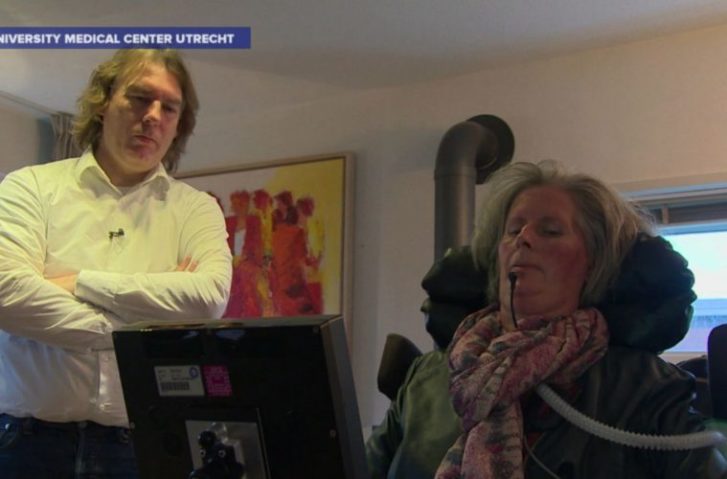Written by Dr. Anne Jensen, PhD, NewEarth University Faculty, School of Health & Wellness
“As the human race evolves, so must our systems.”
– Dr. Anne Jensen, Developer of HeartSpeak
HeartSpeak is a next-generation emotional healing process, integrating concepts from cutting-edge science and common sense that works. The result is a system that is simple, elegant, intuitive and astonishingly effective. Because its focus is on the management of stress, the applications of HeartSpeak are broad, making it convenient for addressing any stress-provoked condition – from physical symptoms to mental / emotional distress to social challenges.
Just as other techniques are becoming more and more complex, HeartSpeak goes in the opposite direction: It is simple, straight-forward, and intentionally vague. And for good reason. The entire HeartSpeak process is specifically designed to engage the Feeling Mind, while at the same time to quiet the Logical Mind. HeartSpeak allows practitioners to speak to the Feeling Mind in a language that it can understand. The end result of a HeartSpeak session is usually a feeling of lightness, clarity, peace and ease – you feel distinctly different afterwards!
What Conditions Can HeartSpeak Address?
HeartSpeak is useful for reducing stress – and since stress is known to contribute to many different conditions, HeartSpeak can be used for any stress-related condition: anxiousness, depressed mood, low self-esteem, not reaching your full potential, and also physical symptoms such as chronic pain, skin rashes, and digestive disorders. If a symptom or a challenge is stress-related, HeartSpeak may be able to help.
Who Is HeartSpeak For?
HeartSpeak is for anyone who wants to make changes in their life, for everyone who believes that things can be different. It is for those who recognize that emotions and feelings can be responsible for difficulties, and for those who acknowledge their own feelings. HeartSpeak is for those who are open to new things, and who are ready to leave the past behind. It is for those who want to know themselves more deeply, more fully and more authentically.
Because HeartSpeak is diverse and can be applied to oneself or to others, people can consult with a HeartSpeak practitioner to be guided through a session, or they can learn basic HeartSpeak principles, which they can apply to themselves.
What Happens In A HeartSpeak Session?
During a HeartSpeak session, a therapeutic alliance is formed as layers of harmful emotions, feelings, and reactions are systematically resolved. In many cases, a client will present to a HeartSpeak practitioner with a specific concern – such as a physical ailment, a low mood, or a sizeable worry. The practitioner will usually ask the client to rate the intensity of the concern using a Subjective Units of Distress Scale (SUDS) – typically from 0 (meaning no concern) to 10 (most concern ever). Then the practitioner will begin to chunk the concern down into manageable pieces, applying the HeartSpeak process to one feeling at a time. For each feeling, the practitioner will use muscle response testing to check for mental/emotional stress, and if present, will ascertain the most useful HeartSpeak feeling that the client needs to resolve. The practitioner will then guide the client through experiencing this feeling until resolution is achieved, and then safely guide him or her toward feeling a more beneficial feeling. In most cases, each run of the HeartSpeak process results in a diminishing degree of distress or concern. The session progresses until the concern becomes negligible (SUDS is “0”) or until the muscle test indicates no mental/emotional stress is present.
One distinguishing features of HeartSpeak is that there is no need to talk about “issues,” or speak about unpleasant memories, or divulge any innermost secrets. In fact, very little talking takes place during a HeartSpeak session – which many find to be a huge relief and even extremely liberating! Clients simply feel their way free of debilitating symptoms and limiting mindsets.
HeartSpeak sessions are private, personal, physical and empowering experiences, and clients will feel distinctly different afterwards. Effectively, HeartSpeak is experiential – it must be experienced to be understood.
How Does HeartSpeak Work?
Fortunately, the mindbody responds to stress in very specific and predictable ways – regardless of the source of the stress or the type of stress presented. This response is called the stress response, and it can manifest as a behavior (you do something), a thought (you think something), or a physiological change (you may notice a symptom). Ordinarily, stress responses, acquired usually through the process of learning, are useful and advantageous, for they keep us out of harm’s way. However, many times they outlive their usefulness, yet they remain intact. It is these unwelcome stress responses that HeartSpeak targets.
What’s more, research has shown that the source of the stress – which we call a trigger – may be experienced consciously or nonconsciously. That means that while you are usually well aware of the undesirable stress response, the trigger may evade your awareness. This makes it extremely difficult to resolve triggers using classical approaches, which require conscious awareness. As an example, those with spider phobia often cannot consciously report any previous critical experiences with spiders which may have caused the learning of a phobic response, yet still, they become paralyzed with fear at the mere hint of a spider. Because with HeartSpeak no conscious awareness of such an event is required, it is the ideal intervention for phobia and similarly distressing conditions.
Using cutting edge concepts from the fields of neuroscience, affective science (the science of feeling), and the science of learning and memory, HeartSpeak softens triggers, leaving the client less and less inclined to experience the same response.
Who Can Learn HeartSpeak?
Anyone with the inclination can attend a HeartSpeak course. HeartSpeak Lite, the fundamental course in basic HeartSpeak principles, does not require any prerequisite coursework, does not use muscle testing, and is usually where people begin. More advanced courses make use of muscle response testing, the first of which is HeartSpeak Level 1, which allows people to delve more deeply into the underpinnings of their emotional world. Once a practitioner’s flow is established, the HeartSpeak Level 2 course steps up the healing another few notches, and teaches how to make HeartSpeak one’s own. Then HeartSpeak Specialty courses and HeartSpeak How-to courses are offered in various topics and which can further enhance one’s practice.
Since anyone can apply HeartSpeak principles to themselves and also to others, HeartSpeak can be used by both practitioners and non-practitioners. As a result, a range of individuals find themselves at HeartSpeak classes – from traditional health care professionals, to complementary therapists, to mothers who just wish to apply the process to themselves and their families.
For those interested in making HeartSpeak a career or introducing it into a professional practice, HeartSpeak International offers a HeartSpeak Practitioner course, a requirement for inclusion in many health funds and professional associations. In addition, a HeartSpeak Instructor program is being developed, which will allow graduates to teach the basic HeartSpeak concepts of HeartSpeak Lite through to the Level 1 process.
HeartSpeak Tip: Using The Mindbody Connection
Remember a time when you noticed someone was sad or down. How did you know? It was likely related to how t hey were holding themselves: their shoulders were likely rounded, and their head was probably tilted down. You can see clearly that one’s mood can impact one’s posture.
hey were holding themselves: their shoulders were likely rounded, and their head was probably tilted down. You can see clearly that one’s mood can impact one’s posture.
To illustrate just how interconnected your mind and body are, let’s try this exercise. Sit in a neutral posture with your eyes closed. Focusing on your heartspace, draw up a feeling of Fear. Yes, just any fear feeling. When doing so, some people think of something that they are scared of or worried about, however this is truly not necessary, so once the fear is evoked, put aside the object of the fear, and focus on just the feeling of fear. Then amplify it, exaggerate it, make it as bit as you possibly can.
Then let the fear subside, thinking of nothing, feeling nothing. Still sitting in a neutral posture with your eyes closed, next find a feeling of Love – first in your heartspace, and then make it grow. Enjoy that for a moment before opening your eyes.
Now that you can evoke Fear and Love, let’s try this… Lean forward, into a ball, which we call a closed or protective posture. In that position, once again find the feeling of Fear. What did you notice? (Most find it much easier to feel fear in a closed posture – did you? If not, try it again.) Then release the feeling of fear, and still in a closed posture, find the feeling of Love. What did you notice? (Many find it much harder to feel love in a closed posture – did you find it harder?)
Next sit up in an Open Posture: shoulders back, chest out, palms up resting on knees, head tilted back slightly, eyes closed. Focusing on your heartspace, once again find the feeling of Love – enjoy it for a while. And what did you notice now? (Most people find it so much easier to feel love in this open posture – did you notice this? If not, try it again – it’s worth it!) Then release the feeling of love, and still in an open posture, find a feeling of fear. What have you noticed? (Was it harder to find, compared to the closed or neutral postures?)
Interesting, right? Just like your feelings can impact your posture, your posture can profoundly impact your feelings too. You can make use of this by using the HeartSpeak Tool we call Open Posture. If you would like to change your mood, maintain an Open Posture, like what is described above. Sound simple, right? And it is! As a practical exercise, think of a memory or a situation that makes you feel sad or bad – and sit with it for a moment. Then rate the intensity of your upset from 0 to 10 (10=worst upset ever, 0=not upset at all). Next, take an Open Posture, and bring the memory or the situation to mind again. Then rate the amount of distress again. Did you notice it’s a bit less?
Do try this exercise, and use the Open Posture Tool whenever you need it! HeartSpeak is an experience – you must actively use it for it to be of benefit. Reading all the words on these pages cannot offer you the same benefit. You do have control over your feelings – take this control back with HeartSpeak! But most of all, if you simply “know” something is not quite right or something could indeed be better, we urge you to keep seeking answers, to keep learning and evolving, lightening and shedding. Because World Peace begins with each of us.
Unwind Your Mind and Set Your Heart Free!
Check out Dr. Anne’s HeartSpeak Lite eCourse at the NewEarth University (NEU)
 Dr. Anne Jensen, DC, MSc, PhD is a forward-thinking healer with a PhD in Evidence-based Health Care from the University of Oxford.
Dr. Anne Jensen, DC, MSc, PhD is a forward-thinking healer with a PhD in Evidence-based Health Care from the University of Oxford.
A faculty member of the NewEarth University’s School of Health & Wellness, Dr. Anne has been a student of human behavior and emotion since she was on this planet. Through her diverse background in mindbody wellness, her empathic ability to observe and her sense of curiosity, she developed HeartSpeak – a unique and empowering stress-reduction tool.









